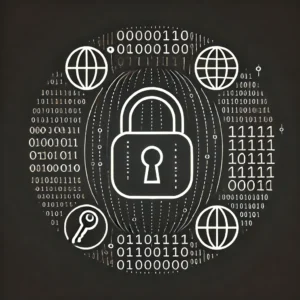Introduction to AES
Advanced Encryption Standard (AES) is a symmetric key encryption algorithm widely used to secure data. AES was established as an encryption standard by the U.S. National Institute of Standards and Technology (NIST) in 2001. It has become a fundamental element in modern data security, used in various applications from encrypting files to securing wireless communications.
What is Symmetric Key Encryption?
In symmetric key encryption, the same key is used for both encrypting and decrypting the data. This contrasts with asymmetric encryption, where two different keys are used. The efficiency of using a single key in AES makes it very suitable for systems where high data throughput and security are both priorities.
The Structure of AES
AES operates on a fixed block size of 128 bits, but it supports multiple key lengths: 128, 192, or 256 bits. Regardless of the key size, the process involves several rounds of processing for encrypting data, which include substitution, permutation, and mixing of the input plaintext and transform it into the final output of ciphertext.
- Substitution: The substitution step replaces each byte of the block with another according to a substitution table (S-box).
- Shift Rows: This step involves shifting the rows of the state array by different offsets.
- Mix Columns: During this step, each column of the state is mixed to produce new columns, making it more diffused.
- Add Round Key: In this step, each byte of the state is combined with the round key; each round key is derived from the main key using a key schedule.
Mathematics Behind AES
AES’s security is largely due to its use of complex mathematical operations. The most notable mathematical aspect of AES is its use of finite field arithmetic.
- Finite Field Arithmetic: AES performs its operations over a finite field of size 2828 (Galois Field 𝐺𝐹(28)GF(28)). This finite field provides a high level of security by ensuring that the operations do not produce predictable patterns that can be exploited by attackers.
- S-box Construction: The S-box used in AES is designed to be resistant to known cryptanalytic attacks. The S-box is constructed by taking the multiplicative inverse in 𝐺𝐹(28)GF(28), which is then followed by an affine transformation.
- Key Expansion: The key expansion routine generates a series of round keys from the encryption key. The round keys are generated using an algorithm that includes permutation and substitution steps, ensuring that the key material is diffused thoroughly.
Security of AES
AES is considered secure against most attacks. However, like all encryption technologies, its security is partially dependent on proper implementation and key management practices.
- Resistance to Attacks: AES is designed to withstand various types of cryptanalytic attacks, including those using brute force methods. Given the current computational capabilities, breaking AES encryption by brute force would take an unimaginable amount of time.
- Key Size Considerations: The choice of key size (128, 192, or 256 bits) affects the security level of AES. Larger keys offer higher security but may reduce performance due to the increased number of rounds in the encryption process.
Conclusion: Why AES Matters
AES has stood the test of time as a reliable and secure encryption standard. Its flexibility in key length and efficient operation across various platforms and devices ensures that it remains favorable in the cryptographic community and industries dealing with sensitive information. The mathematical robustness behind AES also guarantees that it will remain secure against emerging computational abilities for the foreseeable future.
For those interested in a deeper mathematical dive or implementation details, exploring dedicated cryptography texts or the original specification by NIST can provide further insights into the nuances of AES.






